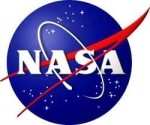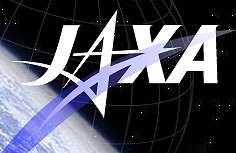NASA, JAXA Will Combine Satellite Resources To Double
Observational Coverage
 In a unique collaboration between national space agencies, the
United States and Japan began combining elements of their satellite
resources on Monday to increase a critical type of Earth
observation data. The partnership will more than double the
quantity of this data that is used to explore earthquake hazards,
forest declines, and changing water resources in the Americas.
In a unique collaboration between national space agencies, the
United States and Japan began combining elements of their satellite
resources on Monday to increase a critical type of Earth
observation data. The partnership will more than double the
quantity of this data that is used to explore earthquake hazards,
forest declines, and changing water resources in the Americas.
This new partnership between NASA and the Japan Aerospace
Exploration Agency, known as JAXA, uses NASA's Tracking and Data
Relay Satellite System to download observations over North and
South America taken by instruments on JAXA's Advanced Land
Observing Satellite, or ALOS. By combining NASA and JAXA data-relay
satellite resources, coverage of North and South America nearly
doubles. Observations will be made about twice as often.
"This is a great example of the value to be gained through
international collaboration between the world's Earth-observing
nations," said Michael Freilich, director of the Earth Science
Division in the Science Mission Directorate at NASA Headquarters in
Washington. "By working together and sharing satellite resources
like this, we can produce more data more rapidly and
cost-effectively than if each of us went it alone."
The Phased Array type L-band synthetic aperture radar, known as
PALSAR, is one of the instruments aboard ALOS. It precisely
measures the distance to Earth's surface under all weather
conditions during day and night. Measurements from this instrument
are used for detecting changes in the ground surface associated
with earthquakes, volcanic eruptions, and landslides; mapping
forest cover and flooding in the tropics that affect the carbon
balance in land-based ecosystems; and determining the speed at
which ice sheets and glaciers move, which contributes to sea-level
rise.
NASA does not currently have this type of instrument in orbit,
but a NASA synthetic aperture radar mission is planned to launch
later this decade. NASA has been obtaining these data from JAXA and
other international space agencies for use by U.S. scientists.
 Under the new agreement with JAXA, NASA will have access to all
the ALOS data acquired over the Americas and can make it available
to scientists affiliated with U.S. government agencies for peaceful
scientific purposes. The Alaska Satellite Facility, a NASA data
center located at the University of Alaska Fairbanks, will process
and distribute the PALSAR data.
Under the new agreement with JAXA, NASA will have access to all
the ALOS data acquired over the Americas and can make it available
to scientists affiliated with U.S. government agencies for peaceful
scientific purposes. The Alaska Satellite Facility, a NASA data
center located at the University of Alaska Fairbanks, will process
and distribute the PALSAR data.
"The expanded ALOS data flow will significantly improve our
scientists' ability to monitor regions at risk to earthquake
hazards, such as Haiti and Chile," said Craig Dobson, natural
hazards program manager in the Earth Science Division at NASA
Headquarters. "Now we will be able to see very small changes in
surface elevation associated with the build-up and release of
strain in seismic zones over virtually the entire area of the
Americas, with measurements made as often as every 46 days.
Scientists also will be able to monitor seasonal changes in
groundwater resources."
NASA's Tracking and Data Relay Satellite System consists of
eight communication satellites stationed in geosynchronous orbits.
With ground stations at the White Sands Complex near Las Cruces,
N.M., and at Guam, the system can provide complete coverage of user
spacecraft. The system supports communications with the
International Space Station, the Hubble Space Telescope, and many
other NASA missions.
ALOS data began to be distributed to users by the Alaska
Satellite Facility today under the new agreement. The partnership
is the result of development and testing work accomplished by a
joint NASA-JAXA team that was started three years ago.
This new NASA-JAXA agreement continues a long and productive
partnership between the nations in satellite observation of Earth.
Japanese instruments are flying on NASA's Terra and Aqua
satellites, and NASA sensors have flown on previous Japanese
Earth-observation missions. The NASA-JAXA Global Precipitation
Mission, to be launched in 2013, will include both NASA- and
JAXA-supplied sensors on a NASA satellite launched on a JAXA
rocket. The mission will provide the first frequent, accurate
measurements of rainfall over the entire globe for use by
scientists and weather forecasters.
 ANN's Daily Aero-Term (12.19.25): Ultrahigh Frequency (UHF)
ANN's Daily Aero-Term (12.19.25): Ultrahigh Frequency (UHF) NTSB Prelim: Cirrus Design Corp SR22T
NTSB Prelim: Cirrus Design Corp SR22T Classic Aero-TV: The Red Tail Project--Carrying the Torch of the Tuskegee Airmen
Classic Aero-TV: The Red Tail Project--Carrying the Torch of the Tuskegee Airmen Aero-News: Quote of the Day (12.19.25)
Aero-News: Quote of the Day (12.19.25) Airborne 12.17.25: Skydiver Hooks Tail, Cooper Rotax Mount, NTSB v NDAA
Airborne 12.17.25: Skydiver Hooks Tail, Cooper Rotax Mount, NTSB v NDAA




